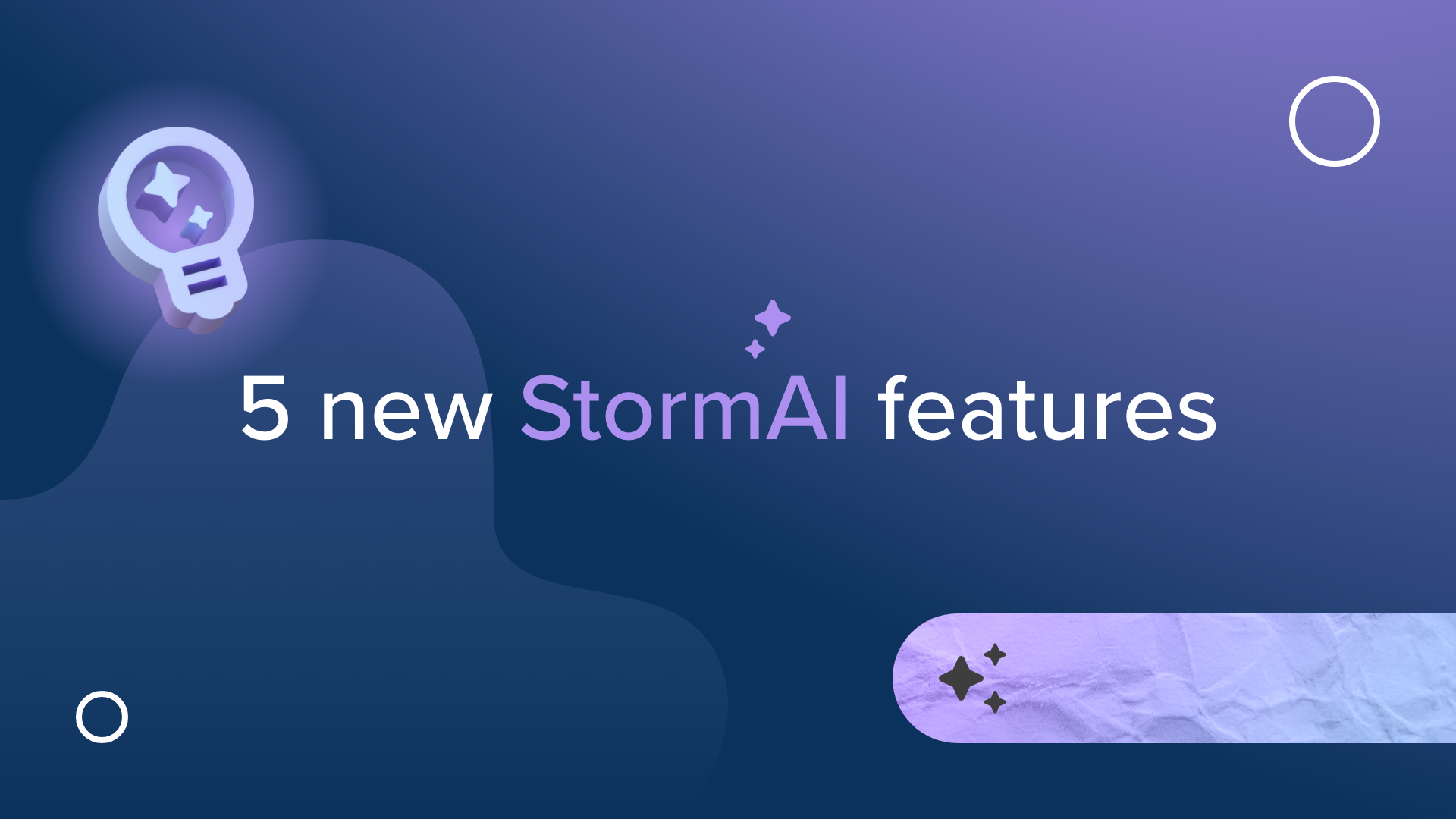How To Build Your Academic Research Project With Stormboard
Today's post is written by Dr. Ben Ellway, the founder of www.academic-toolkit.com. Ben completed his Ph.D. at The University of Cambridge and created the Research Design Canvas, a multipurpose tool for learning about academic research and designing a research project.
Ben is the author of two books, Making A Positive Start To Your Ph.D. Or Professional Doctorate, and Building Research Models. Based upon requests from students for a digital version of the Research Design Canvas, Ben has created a template for Stormboard based on this tool. This is his brief guide on how to use it.
Academic research is complex
The complexity of a Ph.D., Professional Doctorate, or Research Masters can be overwhelming. To effectively design your project, you must review literature in your topic while simultaneously learning about the principles and process of academic research. This is tough!
Due to the complexity of these tasks, many students experience thoughts, ideas, questions, and worries constantly running through their minds. If at some point you feel confused, get stuck, or become frustrated, you are certainly not alone.
How can you tackle the complexity of academic research?
Use the Research Design Canvas Template to reduce complexity
The Research Design Canvas Template simplifies academic research into nine fundamental building blocks, each with targeted questions to guide you when applying academic principles and making crucial decisions to design your project.
Moreover, by placing the fundamental components of your research project side-by-side, you’ll be able to more easily recognize connections and build coherence in your project.
Build your research project on Stormboard
The visual simplicity of Stormboard and the Research Design Canvas Template will enable you to create a ‘birds-eye view’ of your research project. In conventional documents, ideas and points can easily become lost in pages and pages of writing, often leading to a disjointed, confused, or unfocused project. By creating your Research Design Canvas in Stormboard, you’ll have a visual summary of your project, which you can easily access at any time.
Crucially, your understanding of academic research and the literature in your topic area will evolve over time. This means that your project is essentially composed of moving parts — which influence and impact upon each other. A decision you make in one area of your project is likely to influence another part of your project.
Luckily, Stormboard is dynamic. You can use digital sticky notes to quickly add, remove, update, and refine ideas on your research design canvas. So, you’ll have a permanent visual summary of what your research is about, and how you are tracking in developing the various components of your project. As you make progress, you can quickly add new content and easily consider how this might potentially impact or influence parts of your project.
Where should I start?
Where you feel comfortable! There is no right or wrong place to start.
Some projects start with a real-world problem while others start with a theoretical issue. Some projects start with a tentative research question or hypotheses, whereas other projects may start with a preexisting dataset. Relax and add content in any order you want. Do what makes sense for the uniqueness of your project.
To help you make a start, consider the focus of the nine building blocks below.
Phenomenon / Problem
What does your research focus on? What will you investigate? Does your project involve a real-world problem?
Literature
There is a lot of literature out there! To help you avoid getting sucked into literature review quicksand, recognize up front the key area or areas of literature of relevance to your project.
Observations & Arguments
After finding literature, you need to make sense of it. Use this building block to summarise the most crucial points from past research. This could include key evidence and issues, and possibly also a gap.
Research Questions/Hypotheses
What are your tentative research questions and/or hypotheses? These may change — monitor and update this building block regularly.
Theory & Concepts
List relevant theory and concepts. Theory testing or theory building. How important is theory to your research? In some projects, theory is crucial, while in other projects it plays a less important role.
Methodology / Design / Methods
How will your investigation proceed? State the methods or research design here.
Sample / Context
What data will you use? What sampling method? Is the research context important?
Contributions
Think about the intended outcomes from your project. What value-add might your research provide — either to academics or real-world stakeholders?
Philosophical Assumptions / Research Paradigm
These ideas are abstract and as a consequence can be challenging to understand. The relevance of this building block will differ across disciplines. Ask your supervisor for advice about this.
Conclusion
There is no right or wrong place to start on the canvas. Focus on the sections which you feel most confident with first. Each student starts out with different levels of understanding about the various components of academic research.
As you add content and ideas, you’ll gradually be able to build your project and begin to see it take shape. Indeed, as your canvas evolves on Stormboard, you’ll have an ongoing visual reminder of the progress you are making. Good luck!
Are you interested in trying the Research Design Canvas? Sign up for a free trial now!
Keep Reading












